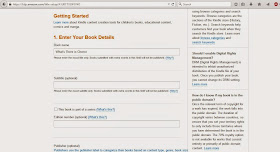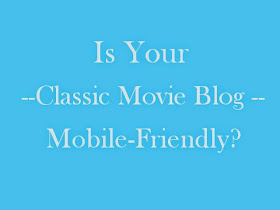By the turn of the 1930s, motion pictures had emerged from their silent days into the age of the “talkies.” However, films still emphasized the visual; speech often seemed an afterthought. Playwright George Bernard Shaw (who had won the Nobel Peace Prize for Literature in 1925), hesitated adapting his famous plays to the screen due to the lack of focus on dialogue in the newer medium. To further deter him, the movie audience’s desires often ran towards the romantic – something that Shaw kept to a minimum in his work.
Previous failed experiences with filming his writing soured
Shaw on adapting his prize-winning plays to film. It wasn’t until the mid-1930s
when Hungarian film producer Gabriel Pascal dropped into Shaw’s life that the
author would find someone who not only respected him but also understood his
vision. Pascal would also fight not to allow Shaw’s limited film expertise to
interfere with the production’s integrity.1
On December 13, 1935, Shaw gave Pascal the film rights to Pygmalion, a hit play from 1914 that had
been based on an ancient Greek myth. This would be the beginning of years of
collaboration between the two men. “[Shaw] entrusted me with the magic flute of
his art, which he knew I could play,” said Pascal.2
When the award-winning playwright was asked why he consented
to have his plays produced for film by an unknown man when so many famous and
wealthy people had knocked on his door asking to do the same, Shaw said, “Until
[Pascal] descended on me out of the clouds, I found nobody who wanted to do
anything with my plays on the screen but mutilate them…. The man is a genius:
that is all I have to say about him.”3
The production began in early 1938 through Pascal Films, a
production company formed by Pascal and Richard Norton, the head of the
recently-created Pinewood Studios. Wendy Hiller was cast as the lead female
character, Eliza Doolittle. As Hiller had completed only one movie prior to Pygmalion, the actress was not
well-known in the film industry. However, Hiller’s theater training worked in
her favor as the playwright enthusiastically gave his stamp of approval for
this casting choice.
The filmmakers also cast Hollywood star Leslie Howard as the
male lead, Professor Henry Higgins. Shaw held a great disdain for Hollywood in
general and disagreed with this casting in particular. He explained that
Higgins is meant to be a “heavy,” and that Howard is so likeable that the
audience will want Higgins to end up in a romantic relationship with the
leading lady, which is against Shaw’s wishes for his heroine.4 Nevertheless,
the casting was not altered.
Pygmalion (1938) follows Eliza, a flower
seller from the slums of London, who asks a professor of phonetics to teach her
a different dialect so that she may gain employment in a flower shop for higher
wages. Fellow author and speech enthusiast Colonel Pickering (Scott Sunderland)
is on hand to raise the stakes. They wager that Higgins’ new pupil cannot fool
dignitaries at an embassy ball. Not only does Professor Higgins eliminate Eliza’s
Cockney accent, but he also refines her poise and conversational abilities to
the point that she’s unrecognizable to almost everyone who had known her
before.
This popular rags-to-riches tale would become the first of Shaw’s authorized film adaptations which
would utilize the camera’s roving eye. The camera would not stay fixed and
unmovable while the actors moved around, as it did in earlier, static Shavian
films that had flopped at the box office. The mobile camera in Pygmalion would move with the players,
even out-of-doors, as when Leslie Howard paces the streets of London on
location.
In a key scene where Eliza announces that she does not
appreciate Higgins’ “bullying or your back talk,” the camera is held at a low
angle over Higgins’ shoulder as Eliza advances towards the camera. This camera
position allows the character to tower over Higgins and fill the screen,
symbolically showing her dominance.
The unique camera placements are also utilized for the
scenes in which Higgins gives Eliza lessons. To produce a quick succession of progress,
montages are used to show Eliza’s change from a “draggletailed guttersnipe,” as
Higgins calls her, to a “duchess.”
These scenes of Higgins teaching Eliza are not in the
original play; these were produced especially for the film and would be a favorite
in subsequent adaptations. In ACT II of the play, Eliza is last seen in
Professor Higgins’ living room accepting the challenge ahead of her. The next
ACT introduces the newly transformed Eliza in the drawing room of Higgins’
mother – Mrs. Higgins. Eliza’s behavior in front of Mrs. Higgins’ guests is
humorously riddled with faux pas, nonetheless, it is obvious that the young
lady has had lessons on speech and decorum which have occurred offstage.
The film, however, fleshes out the transformation onscreen.
Not only do we see Eliza in her first outing after her transition (as we do in
the play), we also see our heroine practicing her vowels and listening to
Professor Higgins play the xylophone for speech intonations. We see the poor
girl (who insists that she’s not dirty because she has washed her face and
hands) protest against her first bath and Higgins chuckle at her dismay. These
moments of Eliza’s growth are like watching a flower unfurl its petals. These
moments also help the audience to understand the friendship that burgeons
between the two leads.5
Also shown for the first time is the last part of Higgins’
experiment. In the play, after we leave Mrs. Higgins’ house, the next scene is
the beginning of Act IV, where Eliza, Higgins and Pickering return home from
their great triumph, having tricked the dignitaries at an ambassador’s garden
party into believing that Eliza is of the upper classes - the event towards
which they have been working the whole time. The party has occurred offstage.
The film, however, decides to show the party, which has been
upgraded to an Embassy Ball. The movie serves its audience a sumptuous feast
for the eyes at the ball, with gentlemen in tuxedos, a grand staircase and
Eliza in the most regal gown we have yet seen her wear. This scene is a visual
exclamation mark to Higgins’ experiment. Ironically, this scene of the victory
of speech over social boundaries runs almost wordlessly for our heroine. At the
ball is a former pupil of Higgins, Count Aristid Karpathy (Esme Percy), who relays
to Higgins an off-screen conversation with Eliza.
However, the audience never hears Eliza utter a word at the ball. Why does a film about speech not allow the audience to hear the leading lady speak during her conquest?
However, the audience never hears Eliza utter a word at the ball. Why does a film about speech not allow the audience to hear the leading lady speak during her conquest?
Is it really Eliza’s conquest? Though we do not hear her
speak at the ball, we do hear her after the ball, in frustration and anger,
hurl accusations at Higgins. In despair, she asks, “What am I fit for? What
have you left me fit for?” Eliza reminds Higgins that this ball, this project
that they all entered into together, is not really her idea, but Higgins’ (“I
won your bet for you, haven’t I?”). Higgins mistakes her question to mean that
she wants undue credit for the experiment. (“You won my bet? You presumptuous
insect, I won it.”)
What, then, is Eliza’s achievement? Choice is her triumph.
From the beginning, our heroine is proud of her ability to support herself
after her “stepmother” turned her out to make her own way in the world. 6
The goal in engaging Higgins’ services is continued independence for herself.
With dialectic change, Eliza can walk away from impoverishment and live among
the middle classes, gain a new standard of living and a range of options.
Whether she chooses to marry the ardent suitor Freddy Eynsford-Hill (David
Tree), work in a flower shop, become a phonetics assistant to Karpathy, return
to Higgins and become one of the “old bachelors” in his house or none of the
above, is immaterial. The point is Eliza has choices.
In the play, this point of independence is inherent in the
final scene. Higgins dictates a shopping list to Eliza, as is their custom,
apparently. However, this time Eliza says, “Buy them yourself,” and walks out.
This leaves Higgins and the audience to guess whether Eliza will return. The
ending is ambiguous.
The film, however, in direct contradiction to the original
play, shows Eliza’s choice. We see Eliza drive away with Freddy, leaving
Higgins to ponder and sulk. As he listens to her recorded voice on the
phonograph, Eliza returns. Higgins hides
his excitement with a curt, “Eliza! Where the devil are my slippers?” Music
swells and that is the end.
The movie ends, claims Pascal’s wife, “leaving the public
assured that Eliza would be running for those slippers to the end of her days.
That was not how George Bernard Shaw ever let his women behave -- but that was
how Gabriel Pascal wanted his women
to behave.”7
Showing Eliza’s final choice onscreen (Shaw knew nothing of
the new ending until the first public screening of the film8) not
only flies in the face of the author, but also truncates audience imagination.
Additionally, it limits the central concept of unabashed independence inherent
throughout the story and in particular in the original, open ending of the
play.
Audiences have often enjoyed the inference of romance
between Higgins and Eliza in any adaptation of the tale.9 This is
understandable as Shaw sets up the two in a Cinderella-like story. Audiences
know the fairytale or folktale structure; usually the leading male and female end
up together in a romance. 10 Some audience members might feel
cheated if Eliza, our Covent Garden Cinderella,11 does not marry a
prince.
What audiences and subsequent adapters of this story often
fail to realize is that, if this is a fairy tale, then Shaw has turned a
narrative trope on its ear. Higgins does not occupy the romantic prince role.
The lead male in Pygmalion is a fairy
godmother – a specially-skilled, platonic helper who aids the protagonist.12
Furthermore, with the exception of Freddy and Eliza Doolittle’s father (Wilfrid
Lawson), everyone seems asexual, including the married housekeeper Mrs. Pearce
(Jean Cadell). Further still, as alluded to earlier, marriage or a romantic
entanglement is not the prize that our heroine seeks. (“I’ve had chaps enough
wanting me that way.”) The prize Eliza seeks from the beginning is continued
independence, but in a different socio-economic terrain.
Pygmalion (1938) premiered at the Venice
Film Festival in August 1938, then was released in the UK on October 6, 1938.
It was a smash hit all over the world, garnering Academy Award nominations for
Best Picture, Best Actor and Best Actress in a Leading Role and winning for
Best Writing, Screenplay. Leslie Howard
won the Volpi Cup for Best Actor during
the Venice Film Festival. The movie made Pascal and Hiller – the least known of
the major contributors of Pygmalion-
sensations all over the world.
For once, Shaw was proud of a film adaptation of his play,
stating that Pygmalion is an,
“all-British film, made by British methods without interference by American
script writers, no spurious dialogue, but every word by the author, a
revolution in the presentation of drama in the film. In short, English über
alles.”13
The 1930s threw off the stiltedness of the silent era,
continued to explore the unique properties of film in story-telling in the
‘talkie’ world, and developed increasingly sophisticated dialogue. For Shaw in
particular, this decade saw the author’s renewed interest in bringing his
brilliant and unusual plays to the screen for generations to come.
Footnotes
1.
Pascal
held a “filial devotion” to Shaw; the childless playwright trusted the producer
as he would a son; the orphaned Pascal found a growing loyalty to the
octogenarian author. This is according to Valerie Pascal, The Disciple and His Devil: Gabriel Pascal and Bernard Shaw (New
York: McGraw Hill, 1970), p. 95.
2.
Pascal, The Disciple and His Devil,
p. 79.
3.
Pascal, The Disciple and His Devil,
p. 87.
4.
Pascal, The Disciple and His Devil,
p. 83.
5.
Showing Eliza’s lessons in the film also produces the unfortunate problem
of making her big reveal at Mrs. Higgins’ house anticlimactic. We have seen
Eliza mastering, among other things, that famous line which was made up
especially for this film: “The rain in Spain stays mainly in the plain.” Thus,
by the time she arrives at Mrs. Higgin’s drawing room, the audience already
knows that our “squashed cabbage leaf” from Covent Garden will do well
pretending to be of the upper set.
6.
Cruel
or indifferent stepmothers are a frequent character in fairytales, according to
Donald Hasse, Ed., The Greenwood Encyclopedia of Folktales and Fairy Tales: G-P
(Westport: Greenwood Press, 2008), p. 640. Shaw continues these fairytale
elements throughout the story.
7.
Pascal, The Disciple and His Devil,
p. 85.
8.
Pascal, The Disciple and His Devil,
p. 85.
9.
Shaw
would forever battle for his original, ambiguous ending. The first Higgins for
the 1914 play – Sir Herbert Beerbohm Tree- famously inserted bits of
sentimental shtick to infer a romance between the two leads and insisted that
his interpretation pleased the audience more. This interference drove the
playwright crazy, according to Max
Beerbohm, Ed., Herbert Beerbohm Tree:
Some Memories of Him and of His Art (New York: Hutchinson, 1920 ),
p. 246. The musical remake My Fair Lady (1964), both onstage and onscreen, has Eliza return to
Higgins. In the film version of the musical, we end with Eliza advancing
towards Higgins as her love song, “I Could Have Danced All Night,” plays.
Audiences loved this. This treatment, mercifully, came after Shaw’s death.
10.
Out of the 31 elements of a folktale
narrative, the last one is the Hero Weds, also known as Boy Gets Girl. Vladimir Propp, Morphology of the Folktale. Trans.,
Laurence Scott. 2nd ed. (Austin: University of Texas Press, 1968), p. 63.
11.
Industrial
London’s ash permeates Eliza’s skin and clothing at the beginning of the story,
almost as a symbol of perpetual mourning for this pauper. Like Cinderella –
another ash-covered lady whose parents are effectively absent- Eliza is
psychologically orphaned. Thus, when our transformed heroine –glamorously
dressed for the ball- returns to the hearth in Act IV, Scene 1 of the film to
retrieve her ring which Higgins threw there during an argument, her hands
become filthy with cinders again. Eliza has returned to a state of mourning. By
the next day, Eliza has packed her bags and run away. However, Shaw does not
allow her to remain bowed down by grief. The next time Higgins sees her, his
pupil is confident in her decisions; she is a phoenix rising from the ashes.
12.
If
there is a prince here, it is the ineffectual, lovelorn Freddy, but who is not
developed as a character beyond his simple infatuation with Eliza. He would
seem unfit for our complex heroine, should she wish to have Freddy in her life.
It is well-known that in response to so many people wanting Higgins and Eliza
to mate, Shaw attached a Sequel to his published play in 1916 to explain his
intentions for these characters and to stave off any productions marrying Eliza
to Higgins. In this explanation, Shaw marries his heroine off to Freddy (who is
anemic and useless as a breadwinner) and gives her a failing flower shop. He
does this, not because it’s the right ending, but as if to say that since you
want Eliza to have a romantic ending, he will give you one, but it won’t be
happy and it won’t be with Higgins. Bernard Shaw, Pygmalion, ( New York: Brentano, 1916).
13.
Pascal, The Disciple and His Devil,
p. 85.
----------------
This post is a part of the Fabulous Films of 1930s Blogathon.



















